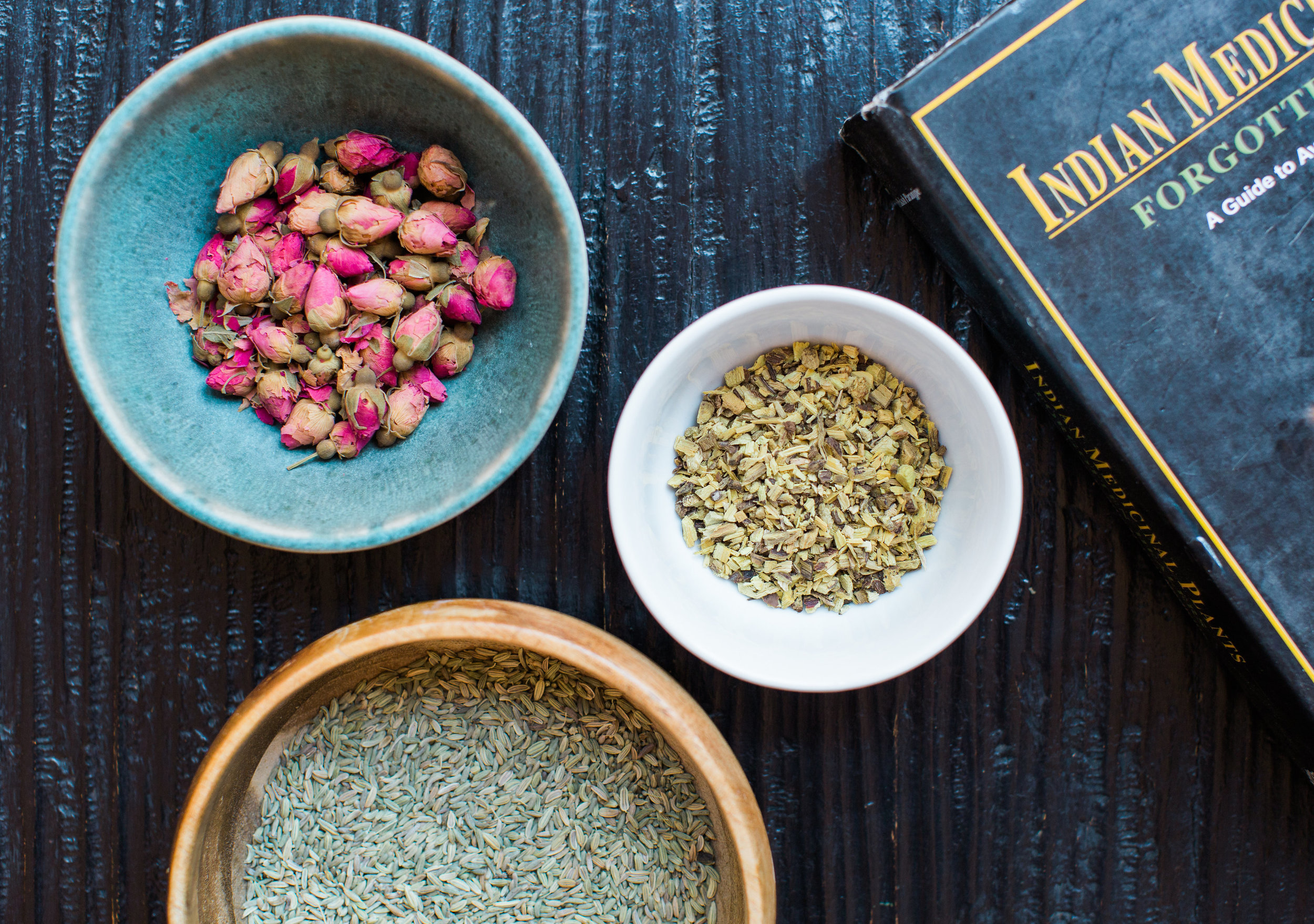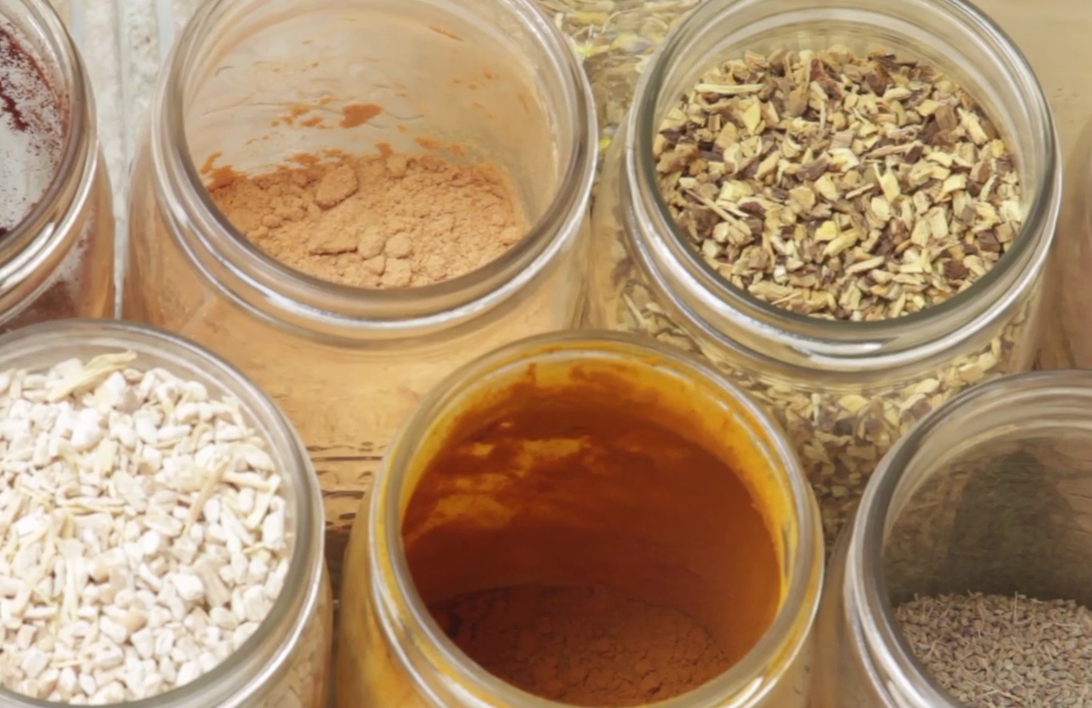Ayurveda: The First Word in Skincare for the Real You
It’s often said that our skin is the mirror of our internal health and well-being. This popular metaphor points to an important truth: The way we care for our skin is inextricably intertwined with the way we care for our health. Ayurveda, the holistic medical system that has flourished in India for thousands of years, has always recognized this connection. Ayurvedic skincare practices are rooted the same intuitive wisdom that drives Ayurveda’s approach to nurturing overall wellness. In both cases, the individual as a multi-faceted whole, rather than the particular dysfunction afflicting that individual is the primary focus of treatment.
An Ancient Path to Wellness That Proves Ahead of Its Time
The founders of Ayurveda sought to understand individuals in terms of their prakriti—the unique constitution each person is born with. Their conception of prakriti as the physical expression of interconnected energy patterns reflects the same profound insight into the nature of reality that underlies modern-day quantum physics. In the ancient language of Ayurveda, the energetic rhythms that manifest in every aspect of our external and internal reality are called doshas. The three doshas described in Ayurvedic theory—vata, kapha, and pitta—are each said to possess a distinctive character that derives from its elemental make-up. In this scheme of things, vata shares the mobile nature of space and air; pitta, the transformative character of fire and water; and kapha, the binding quality of earth and water. Ayurveda proposes that our prakriti integrates all three of these doshas, but that one or two dominate it, determining our individual strengths and weaknesses, the diseases we’re susceptible to, and how we respond to various treatments. Recent scientific studies show that each of the doshas does in fact correspond to a particular genetic profile that’s associated with specific biological traits and tendencies.
With the rise of new game-changing therapies designed for individuals with a particular genetic makeup, Ayurveda’s prakriti-based approach to healthcare has proven to be an idea whose time has come. Centuries before the term personalized medicine was invented, Ayurvedic physicians recognized the value of tailoring treatments to an individual’s defining characteristics. This emphasis on customization is equally fundamental to Ayurvedic skincare. Like the Ayurvedic healthcare model, this timeless innovation in complexion care transcends the limitations of one-size-fits-all treatment.
The Right Product for the Right Person at the Right Time
Ayurvedic skincare starts from the premise that our skin’s qualities and behavior reflect the hallmark features of our constitution. For instance if your constitution is dominated by the fiery energy of pitta, your skin will have pink or reddish undertones, feel warm to the touch, and show a tendency toward inflammation and irritation. This tendency can erupt into an angry rash or a full-blown acne flare when serial stressors that share this dosha’s fiery, intense qualities add up to an overload of pitta energy. Anything from a spate of hot, spicy meals to an overdose of direct sunlight or even the built-up tension from a heated family feud can tip the balance.
In fact, according to Ayurveda, every skin issue, from excessive dryness or oiliness to eczema and age spots, ultimately stems from a disruption in the balance of doshic energies that is natural and healthy for your constitution. These imbalances can arise from a variety of environmental and lifestyle influences. Among the chief culprits are harsh weather, toxins and pollutants, poor diet, insufficient sleep, and erratic schedules. Just as tropical temperatures or strong chemicals are likely to aggravate sensitive pitta complexions, the thin, dry skin, wrinkle-prone skin of vata types tends to react negatively to stressors that amplify the cool, light, rough, changeable qualities of their constitution. Frigid weather, desert winds, and irregular mealtimes can all wreak havoc on delicate vata skin. Likewise, lack of exercise; overindulgence in rich, fatty foods; or too much sleep can disturb the equilibrium of kapha complexions. While balanced kapha skin is smooth and moist, it may suffer from dullness or oiliness, clogged pores, and breakouts when unhealthy habits provoke a buildup of that dosha’s dense, slow, heavy energy.
Despite their vulnerability to internal and external stresses, each of these doshas also possesses the intrinsic potential to manifest a beautifully balanced complexion. Ayurveda prescribes individualized skincare plans to bring that potential to fruition. These multidimensional wellness-based plans address the particular needs of your constitution with dosha-specific dietary, exercise, and stress-reduction strategies, as well as customized herbal treatments. This highly nuanced approach to skincare stands in stark contrast to mass market offerings. The vast majority of skincare products sold today are aimed at broad, loosely defined complexion types. A product designed for a hypothetical customer with dry, oily, combination, or normal skin lacks the precision of an individualized solution based on detailed knowledge of a real person. Ayurveda’s precisely targeted treatments really zero in on the unique mix of qualities that distinguishes your complexion while also taking into account your skin’ response to the particularities of your external circumstances.
Because these circumstances are ever-changing, the best Ayurvedic skincare providers treat your complexion as a work in progress. At Purusha Botanicals, we recognize the importance of providing you with products that are meticulously tailored to the current condition of your skin. Our product development process accounts for the fact that your skin’s needs change as you pass through different seasons of the year, different stages of life, and different lifestyle situations.
The process starts with an online survey that captures a wide range of details about your overall constitution, the qualities and tendencies of your skin, the nature of your environment, and the characteristics of your lifestyle. A computer analysis of this data then generates an Ayurvedic product formula that draws from centuries of accumulated knowledge of which herbs, plant-derived oils, and other botanical ingredients are best suited to your skin’s present requirements. Whether it’s deeply hydrating aloe vera juice in a cleanser for vata types, anti-inflammatory rosehip oil for a pitta moisturizer, or oil-reducing gram flour in an exfoliating scrub for kapha complexions, each ingredient in our formulas is specifically chosen to bring the physiological properties and functions that define the nature of your skin back into balance.
Handcrafted by our product experts, your made-to-order formula continues to evolve every time you order from Purusha. As you provide us with fresh input about the state of your complexion, seasonal changes in your environment, and any new skincare goals and concerns that have come into play, we update and refine your formula. By adding or removing ingredients or tweaking their proportions, we make sure you get exactly what you need when you need it. The resulting product fulfills the promise of Ayurvedic skincare to nourish and perfect the true natural beauty that is yours and yours alone.





















